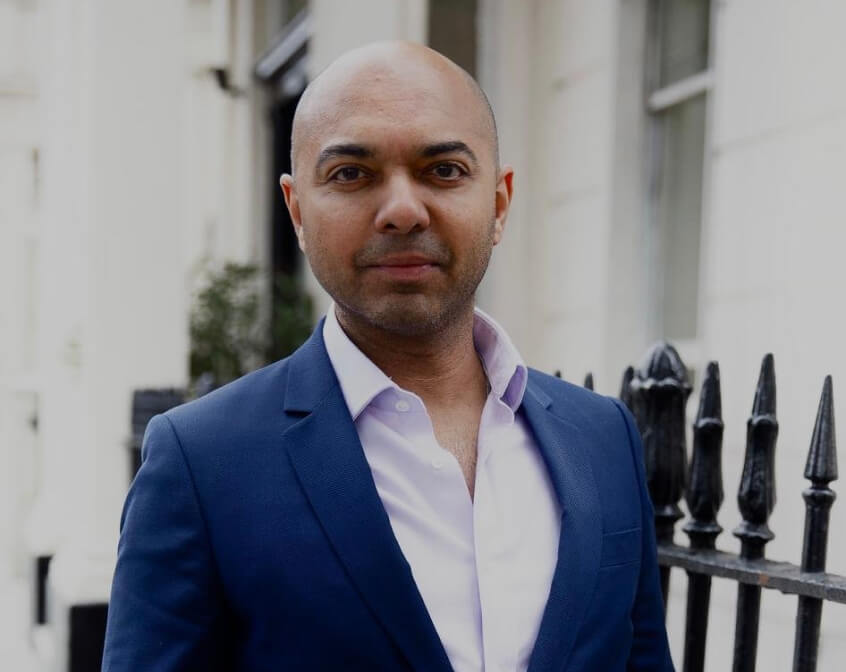Global tech companies face massive, evolving challenges in each step of their growth journey — Rachit Lohani has consistently tackled these issues at scale at some of the biggest organizations in the world, like Atlassian, Intuit, and Netflix. These days, Rachit is the Chief Technology Officer and SVP of Engineering and Product at Paylocity, a global provider of cloud-based HR and payroll software solutions.
Throughout his career, Rachit has mastered the art of team-building and product scaling to meet the demands of customers across the world within nearly every industry. At Atlassian, he powered the company’s entire product suite with his platform and infrastructure expertise. At Intuit, he spearheaded multi-regional Knowledge Engineering teams, revolutionizing TurboTax with AI and ML for personalized tax preparation to help save millions of customers money. Wherever he goes, Rachit mentors senior leaders to ensure strategic alignment, underscoring his knack for driving organizational growth and technical breakthroughs.
Rachit recently met with Crew Capital‘s Brandon Deer to discuss the scope of his career and share his thoughts on solving problems, scaling engineering teams, and reshaping human capital management (HCM) through Artificial Intelligence.
Watch also the video version of the interview!
An atypical start to an engineer’s path
While many successful people know exactly what they want to do from an early age, Rachit’s path didn’t solidify until well into his computer science studies. Rachit shared an anecdote of working long hours as an intern at Bloomberg, and his “A-ha!” moment came late at night on his way home after hours of closing out Jira tickets.
“Walking home, I halfway through stopped and said to myself, ‘You know what? I want to be an engineer. That is exciting to me! I love solving problems. I want to be an engineer,'” he said. “This was after I had gotten my BS in math and computer science, and my masters in math and computer science. I was invited to enroll in a Ph.D. program in computer science…but the excitement had nothing to do with education. It was all about the excitement to build something.”
Rachit often says he was a late bloomer, and his story contrasts the frequent, fairytale success where a person knows what they want from childhood and they manifest that reality. He cites a conversation with his advisor following his late-night epiphany as a crucial one in finding success. Rachit’s advisor guided him through the courses he needed to complete his studies, but more importantly, offered him advice that has resonated throughout Rachit’s career.
“You might not be the smartest person in the room. You might not be the most authoritative person in the room. But keep one thing in mind: You can always be the hardest-working person in the room,” he said.
Inspire thousands by example
No manager wakes up one day and suddenly has the wherewithal to manage a team of thousands. It’s impossible to interact with that many people every week, let alone every day. For Rachit, leading a team of 2,000 people, as he does today, means setting an example.
“How you show up in 10, 20, 30 minutes, how you respond to Slacks, messages or emails, it leaves a lasting impression,” he said. “As a leader, I know I’m not developing software anymore. I barely spend time looking at the architecture, the design, and the product road maps. I spend a lot of time being a catalyst for the team.”
Rachit views it as his role to remove roadblocks for his team so they can accomplish their goals. He views it as his role to provide the team with the right business and technical context so they understand why they’re doing what they’re doing. He views it as his role to be the director of information, both to and from the teams so that everyone is aligned.
“The hard part about being a leader is you have to be always on,” Rachit said. “As an individual contributor, as an IC, even as a manager, it’s perfectly fine if you clock out at some time and relax. As a leader, you don’t get to do that…I have signed up for this to be always on or always available for the team so that I can remove the roadblocks. That way we will move faster.”
Recruit smart: Seek these two essential traits
Over the last three or four years, Rachit has interviewed more than 100 candidates at the VP or “head of” level. In that time, he’s identified two foundational traits that define the successful candidates: Curiosity and masterful goal-setting.
“Good leaders are always curious to know more. They think in terms of risks and assumptions and then get their decisions,” Rachit said. The best way to assess a candidate’s curiosity, according to Rachit, is simple: Ask them about what they’ve been reading.
“It could be any topic: A technical topic, a non-technical topic, or even a fictional topic,” he said. “As long as they can go deep and provide their own unique perspective on what it has meant to them, that is a really good sign.”
To Rachit, demonstrable curiosity indicates a leader who can take information from the world, translate it into action, and then gain wisdom from the process. As for goal-setting, Rachit emphasized the importance of finding the sweet spot of not aiming too high or too low.
“If you set very high goals…everyone is tense, pressure is high, and no one can work properly. It increases stress, attrition goes up, your ‘A players leave,’ your productivity drops and a lot of bad things happen,” Rachit said. “If you set too low of goals, it gets boring.
People are not able to depend on you, as you keep missing your timelines, you’re lowballing everything. Your A players get bored, and they leave.”
Identify startup engineers with surgical precision
Rachit sees a clear differentiation between an engineer who succeeds in working at startups and an engineer who succeeds in working at a company of scale.
“An engineer who is successful within startups is usually very customer-obsessed,” Rachit said. “They want to understand the life cycle. They want to know the end-to-end of it so that they can focus on different aspects and areas. And that is a key indicator of what kind of talent you need to attract.”
He went on to explain that finding engineers who are excited to work up and down the tech stack provides a huge benefit, as these people are prepared to wear different hats. Additionally, while plenty of good comes from engineers working on projects that are slightly outside their primary domain, successful engineers at early-stage startups need business acumen and to remain focused on the customer.
“The goal, the leverage you have, is velocity,” Rachit said. “You get velocity by being surgical and focused on the outcome of the customer.”
Three levels of customer feedback inform product development
While it might seem obvious that a product needs to cater to its customers, it’s not always so simple. Feedback comes from buyers, current users, and non-customer prospects, with each providing something different and useful. The first level comes from making sure current customers remain satisfied.
“We have operations who interact with customer success and with a lot of current customers,” Rachit said “They help us prioritize what we should focus on today. What bugs do we need to troubleshoot, what features do we need to build, what automation do we need to build in between?”
As Rachit went on to explain, buyers of B2B software might be different from the actual users. Those users provide the second level of feedback and further shape product decisions.
“These are millions of users, and we get all of their input into product metrics,” he said. “We look at Sankey charts. We look at these product analytics to figure out: What’s the drop-off rate? Where are people going? How are they discovering work? What jobs are people doing on the platform? We can then focus on how to build the UX, how to build the perfect product.”
The third level of input comes from sales prospects who choose not to buy software. While they aren’t monetized today, their feedback helps provide a roadmap for the future of a product.
“As an example, sales deals with a lot of prospects, of which, 20 to 25 percent might convert to customers. But then we get feedback from that other 75 percent of prospects who did not convert,” Rachit said. “Their feedback is critical as well. We channel that and say that these are prospective customers. We’ll go after them tomorrow or next year when our product is ready.”
The impact of LLMs and AI on HCM
As much as anything, Rachit was excited about the changes large language models (LLMs) and AI have brought to HCM. AI advancements are now allowing HCM systems to better integrate data that was previously siloed in disparate systems. Those advancements allow for a more comprehensive look at individual performance in one place.
“If you go to any manager and say, ‘How are your teams doing? Tell me about retention. Tell me about their engagement. Tell me about productivity. Tell me about the market pay,’ they would go to five different systems to get the data for you,” Rachit said. “That is painful. That needs to be solved.”
Paylocity is working on solutions that ingest all that data for managers, leaders, and executives to produce a single pane that tells how teams are doing.
“That will lead to better hygiene, will lead to more innovation, and capability to leverage more and more AI,” Rachit said.
LLMs and AI also unlock new ways to build up a workforce. In the past, HCM focused on buyer personas and people in human resources departments — not the workers inside HCM systems.
“We’re seeing a shift in the design of the software. Now it’s designed to delight users,” Rachit said. “Companies are now investing back in their people by leveraging tools to hear directly from their people what’s working, what’s not working.”
The implementation of LLMs and AI into HCM systems also allows for more real-time feedback, meaning accomplishments don’t need to wait months to hear positive reinforcement. In the past, workers at many organizations have had to wait for annual or semi-annual reviews to receive useful feedback. The new HCM systems are changing that.
“You can incentivize the right behaviors and thank people for a good outcome and don’t have to wait these 6, 12 months to tell someone that they did a really good job,” Rachit said.
More importantly, investment in new HCM technologies is allowing companies to boost performance and better groom people with continuous feedback.
“If you invest in people, your business will grow,” Rachit said.
Related Articles

Kedar Dani: Building a Scalable Sales Engine at Early Stage Startups
In this conversation with Crew Capital’s Dylan Reider and Sonia Damian, Kedar Dani, GTM Advisor, shares sales advice for startups,…

The Science of Scaling Sales: Frank Golden’s Framework for Early-Stage Startups
Crew Capital recently hosted a roundtable discussion led by Frank Golden, founder of Golden Ventures and experienced early-stage go-to-market (GTM)…

Guy Kirkwood: The Power of the Network in Scaling a Startup
Crew Capital’s Dylan Reider and Sonia Damian recently sat down with Guy, as part of our operator interview series. Our…








